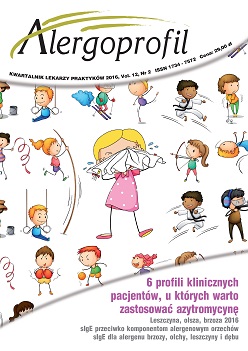Birch pollen grains without cytoplasmic content in the air of Szczecin and Bialystok
##plugins.themes.bootstrap3.article.main##
Abstrakt
Birches, due to their wide ecological amplitude are components of almost all woodland communities from very dry dune pine forests to mires, from poor to fertile ash-elm carrs and also birch pollen has the potential to be transported long distances from one region to another. This paper presents course of the pollen season and comparison of the concentrations of birch pollen grains with and without cytoplasmic content in Szczecin and Bialystok. Measurements were performed by the volumetric method (Burkard and Lanzoni pollen samplers). Pollen season was defined as the period in which 98% of the annual total catch occurred. Seasonal Pollen Index (SPI) was estimated as the annual sum of daily average pollen concentrations. The pollen season of birch started in Szczecin and Bialystok at the beginning of the April and lasted to the half of May. However total pollen was two times higher in Bialystok than in Szczecin. The maximum values of seasonal pollen count occurred in the middle of April in both cities. The risk of pollen allergy was high in Szczecin and Bialystok, and threshold values of allergy symptoms’ occurrence were exceeded during the whole birch pollen season. Statistically relevant correlations between wind speed, particulate matter and birch total pollen, and also between the pollen concentration without cytoplasmic content were observed. Also, southern air circulation from Africa was noted. These coexisting factors indicate the appearance of long range transport of birch pollen from southern Europe in 2016.
Pobrania
##plugins.themes.bootstrap3.article.details##
Copyright: © Medical Education sp. z o.o. This is an Open Access article distributed under the terms of the Attribution-NonCommercial 4.0 International (CC BY-NC 4.0). License (https://creativecommons.org/licenses/by-nc/4.0/), allowing third parties to copy and redistribute the material in any medium or format and to remix, transform, and build upon the material, provided the original work is properly cited and states its license.
Address reprint requests to: Medical Education, Marcin Kuźma (marcin.kuzma@mededu.pl)
Bibliografia
2. APG II system. An update of the Angiosperm Phylogeny Group Classification for the Orders and Families of Flowering Plants: APG II. Bot J Linn Soc 2003, 141(4): 135-149.
3. Szczepanek K. Pollen calendar for Cracow (South Poland) 1982–1991. Aerobiologia 1994, 10: 65-75.
4. Emberlin J, Savage M, Woodman R. Annual variations in the concentrations of Betula pollen in the London area, 1961-1990. Grana 1993, 32: 359-363.
5. Rapiejko P, Lipiec A, Wojdas A et al. Threshold pollen concentration necessary to evoke allergic symptoms. Int Rev Allergol Clin 2004, 10(3): 91-93.
6. Skjoth CA, Sommer J, Stach A et al. The long range transport of birch (Betula) pollen from Poland and Germany causes significant pre-season concentrations in Denmark. Clin Exp Allergy 2007, 37: 1204-1212.
7. Woś A. Klimat Polski. PWN, Warszawa 1999.
8. Dyakowska J. Podręcznik palynologii. Metody i problemy. Wydawnictwa geologiczne, Warszawa 1979.
9. Grote M, Vrtala S, Niederberger V et al. Expulsion of allergen containing materials from hydrated rye grass (Lolium perenne) pollen revealed by using immunogold field emission scanning and transmission electron microscopy. J Allergy Clin Immunol 2000, 105: 1140-1145.
10. Rapiejko P, Puc M, Woźniak-Kosek A. Pyłek brzozy w powietrzu wybranych miast Polski w 2015 r. Alergoprofil 2015, 11(2): 53-61.

